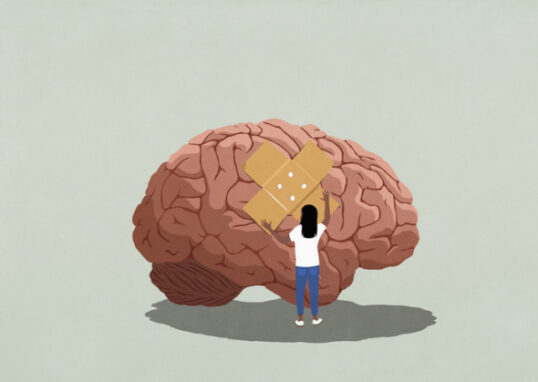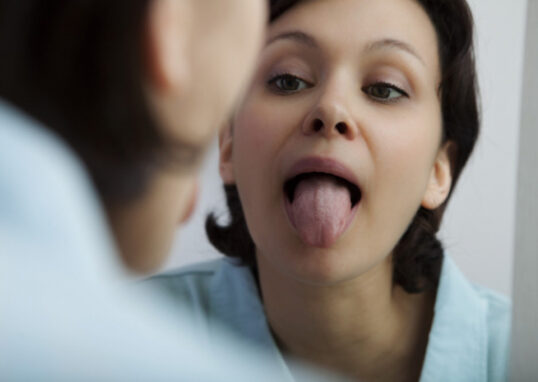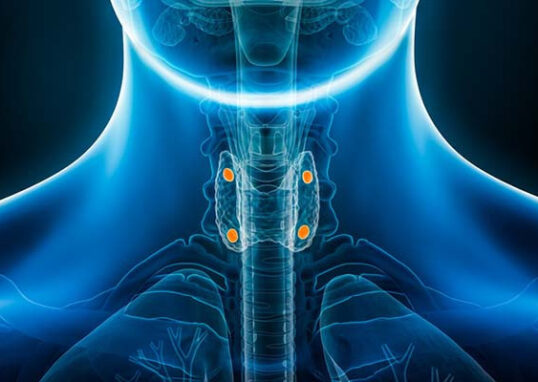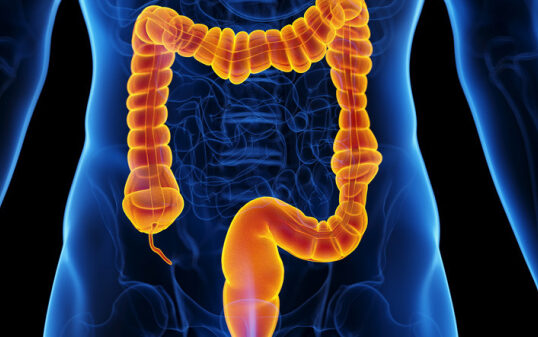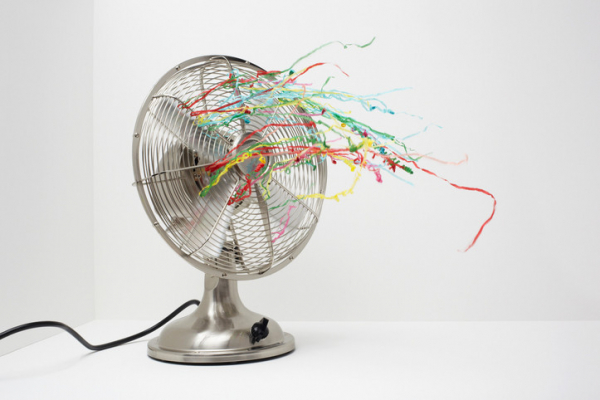

It’s not often that a new drug comes along that could help nearly a quarter of the adult population. But when it does, you can bet you’ll see ads for it on TV and the Internet.
That’s the case with Veozah (fezolinetant), a medicine for hot flashes and night sweats due to menopause that was approved by the FDA in May 2023. One ad has this inventive tagline: “You can have fewer hot flashes and more not flashes.”
So, what is a not flash and what does the ad tell us about this new drug?
The ad: This is a not flash
The ad begins with an upbeat song, “Good Feeling,” a hit by Flo Rida released in 2011. A woman in a crowded elevator is clearly distressed and soaked in sweat as the voiceover declares, “This is a hot flash.” A second woman appears, awakening in her bedroom covered in sweat. Again, the narrator declares “This is a hot flash.” Cut to two smiling women on a dock taking selfies as boats sway behind them: “But this is a not flash.”
The voiceover tells us that Veozah is a prescription treatment for women with moderate to severe hot flashes and night sweats — or vasomotor symptoms, as medical experts say. (Hot flashes may or may not prompt sweating, while night sweats are exactly as billed.)
When the voiceover tells us the drug is “hormone free,” the words “100% hormone-free” appear on the screen. Got it? Apparently, this drug contains no hormones.
Does Veozah work?
But is it effective? The ad voiceover says, “Veozah has been proven to reduce the number and severity of hot flashes day and night. For some women, it can start working in as early as one week.”
The details are easy to miss. They appear in fine print briefly at the bottom of the screen: “At 12 weeks, women taking Veozah experienced 63% fewer hot flashes vs. 42% on placebo.” Sounds good, right? More on what this actually means below.
What does the ad tell us about risks?
The FDA requires drug manufacturers to review the most common or serious risks of taking the drug. So while the catchy song continues, images appear of women peacefully sleeping, teaching a classroom full of students, or working in a hectic office. The voiceover warns that some people shouldn’t take Veozah: anyone with cirrhosis (a form of liver disease) or severe kidney problems, and anyone who takes a medicine known as a CYP1A2 inhibitor.
Next comes the litany of possible side effects, including:
- the need for repeated liver blood tests before and during treatment
- stomach pain
- diarrhea
- difficulty sleeping
- back pain.
What does the ad get right?
This ad highlights significant suffering caused by hot flashes and night sweats, which affect about 80% of women during menopause. Currently, treatment options (and, truth be told, actual research on those dealing with these problems) are quite limited. Hormone replacement with estrogen and related medicines was often prescribed in past years. But concerns about risks associated with estrogen use led many physicians to stop prescribing hormone replacement, and many women decline it when it’s offered.
But Veozah works without hormones: it blocks a protein in the brain that helps regulate body temperature. That’s why the “hormone free” message is emphasized in the ad.
Just how effective is Veozah for hot flashes and night sweats??
Unfortunately, digging more closely into the data shows the difference between Veozah and placebo in reducing hot flashes and night sweats is relatively small. And some important information is missing or incomplete in the ad. I filled in gaps by looking at two pivotal trials of Veozah (called SKYLIGHT 1 and SKYLIGHT 2).
What exactly are “moderate” and “severe” symptoms?
For this study, women had to have at least seven moderate to severe hot flashes per day, although the average was 10 to 12. A moderate hot flash was defined as a sensation of heat with sweating that did not interfere with activities. A severe hot flash was a sensation of heat with sweating that did interfere with activities. So, the number of moderate or severe hot flashes tallied by the researchers in this study included sweats, regardless of what time of day they occurred.
How many hot flashes or night sweats were prevented?
The ad provides data on effectiveness as a percent reduction: 63% fewer hot flashes. Importantly, that doesn’t tell you the actual number of hot flashes prevented. During 12 weeks of treatment, women given the medicine went from experiencing an average of about 11 hot flashes a day at the start to about four a day. By comparison, the group taking a placebo (an inactive pill) dropped from 11 hot flashes a day to 6.5 a day. So, that’s about 2.5 fewer hot flashes a day in total for women taking the drug.
- What about effectiveness after 12 weeks? Based on the published studies (including SKYLIGHT 4), effectiveness persists for at least a year with continued treatment. While that’s good news, it would be helpful to know whether effectiveness wanes or persists beyond one year, because menopausal hot flashes and night sweats can come and go for many years. The average is about seven years, and it’s not rare for them to last a decade or more.
- How diverse were the study participants in the clinical trials that led to FDA approval? More than 80% of study participants identified as Caucasian, 17% as African American, 24% as Hispanic/Latina, and 1% as Asian. Studies of a more diverse population are needed.
What else should you know about possible downsides of Veozah?
The ad covers the most common side effects reported during trials of this drug. Yet advising people to avoid Veozah if they take a CYP1A2 inhibitor is likely to perplex most viewers. This warning relates to an enzyme that helps the body metabolize many medicines, including Veozah.
If you’re already taking a medicine that inhibits the action of this enzyme and you start taking Veozah, the blood levels of Veozah may rise higher than intended and increase the risk of side effects. Many common medicines can cause this interaction (including ciprofloxacin, some oral contraceptives, and cimetidine). Ask your doctor about this before starting Veozah.
Finally, the ad provides no information about cost. According to the drug maker’s website, the list price is $550 a month. That’s the amount you’d be charged if you have no health insurance.
But the average price for people with commercial health insurance is $41 a month. It’s about $77 a month for people covered by Medicare Part D, and $12 a month for people with Medicaid. The drugmaker’s Patient Assistance Program may provide the drug at no cost for some people who are eligible — though eligibility criteria aren’t easy to find and aren’t included in the ad.
The bottom line
A newly approved, nonhormonal drug for hot flashes and night sweats during menopause is big news. But it remains to be seen whether this is a small step forward or a major advance. Either way, the ad mostly does its job: it introduces us to a new medication for a common and burdensome condition that currently has limited treatment options.
Of course, this one-minute ad for Veozah isn’t intended to cover everything a viewer might want to know about it; it’s intended to get people with significant hot flashes and night sweats to ask their doctor about the advertised drug. Keep that in mind when you see ads for this drug — or any drug ad, for that matter.
While I’m not sure whether Veozah will prove to be a wonder drug, one thing’s for sure: that song sure holds up well.
About the Author

Robert H. Shmerling, MD, Senior Faculty Editor, Harvard Health Publishing; Editorial Advisory Board Member, Harvard Health Publishing
Dr. Robert H. Shmerling is the former clinical chief of the division of rheumatology at Beth Israel Deaconess Medical Center (BIDMC), and is a current member of the corresponding faculty in medicine at Harvard Medical School. … See Full Bio View all posts by Robert H. Shmerling, MD
